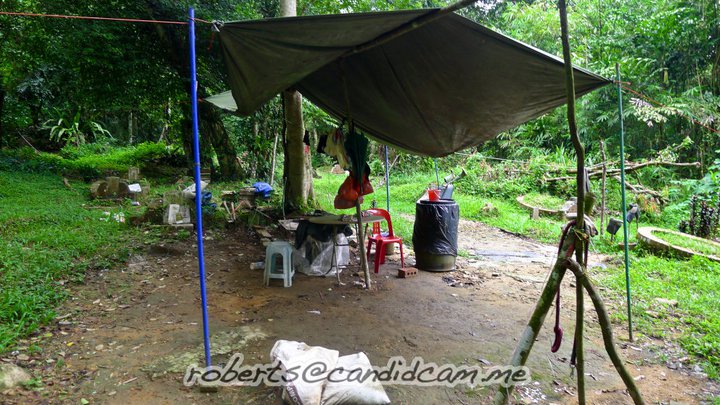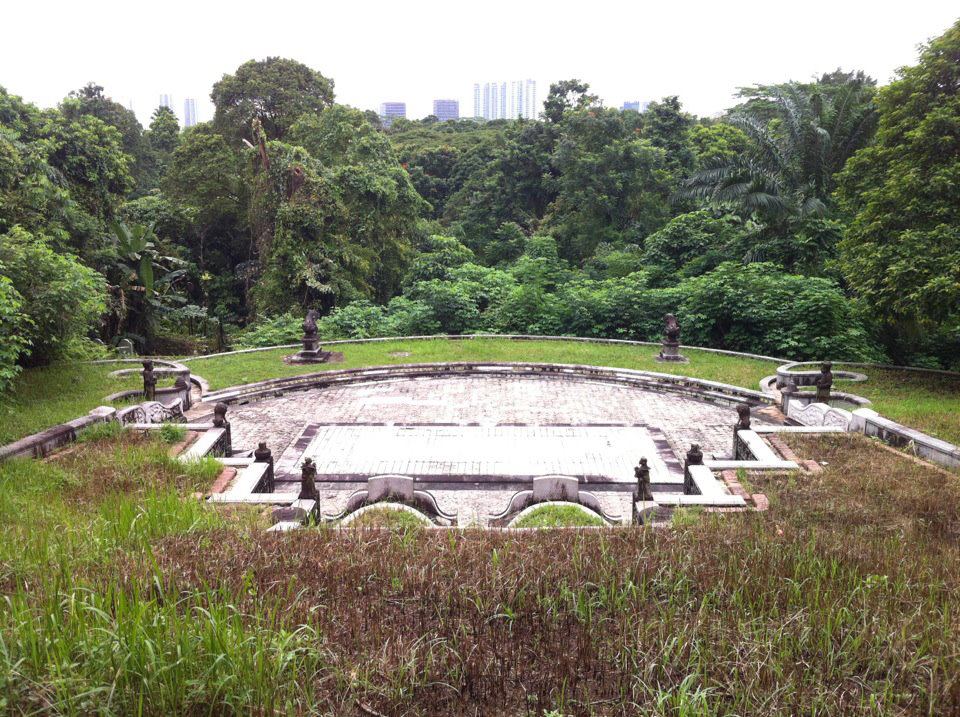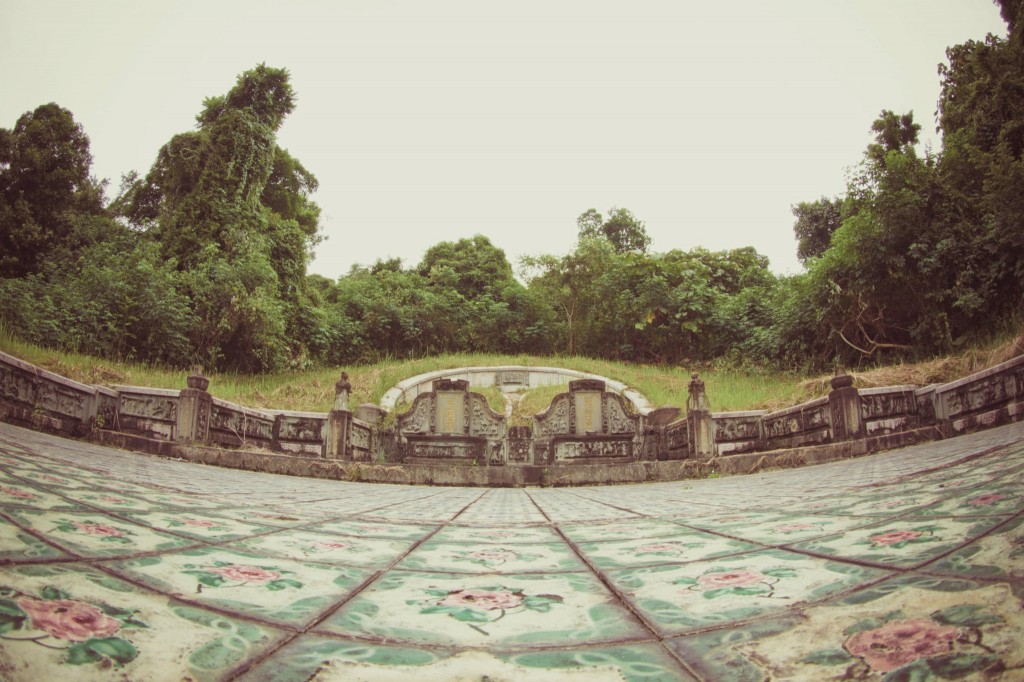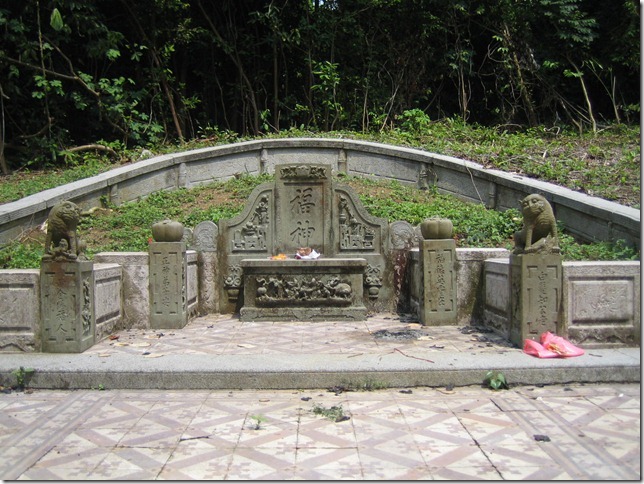Ong Sam Leong, A Grand Repose
9Ong Sam Leong (1857-1918)
The grandest and largest tomb site in Bukit Brown Cemetery lies on its tallest hill and covers an area of 600 square meters, roughly the size of ten, 3- bedroom HDB flats (public housing apartments). Seh Ong Hill was also known as Tai Yuan Hill (Tai Yuan Shan) as the Ong Clan (who initially bought the cemetery land) is believed to originate from Tai Yuan in Shanxi, China.
Buried here is Ong Sam Leong, a prominent and successful businessman who by the time of his death had built up a fortune, which consisted of large landed properties and business interests in Singapore, Malaysia and in the region.
Ong Sam Leong came from a humble background and had little education but a nose for business. He made his fortune when at just 29 years old, became the sole contractor to supply workers from China to work for a phosphate mining company on Christmas Island. Most of the labourers (coolies) were from Guangdong, China and their stopover before Christmas Island was the coolie houses in Pagoda Street in Chinatown. Ong also opened a sundry shop on the island to sell the workers supplies.
His businesses concentrated on construction-related industries including brickworks in Indonesia, sawmills in Singapore, timber concessions in Malaysia. He is recognised as a pioneer in building up the prosperity of Malaysia in the early 20th century.
The flagship company Ong Sam Leong & Co, was located in South Canal Road and North Bridge Road. Sam Leong Road – a stretch of about 200 meters long between Jalan Besar Road and Verdun Road in Little India – is named for him . During World War I, Ong contributed generously to fund-raising efforts of the patriotic movement of the Straits Chinese Community.
Socially, Ong was equally prominent and popular. He was for many years the President of the Bun Chye Ho Club, believed to be the oldest Chinese Club in Singapore. Ong was a hardworking man who kept himself busy till his last days. He was known to like motoring and sea trips. Before his death, he built a fine house in Bukit Timah Road called Bukit Rose. There he entertained friends on a lavish scale.
Ong Sam Leong’s two sons, Ong Boon Tat and Ong Peng Hock inherited their fathers’ fortune and his business acumen. The Ong brothers diversified into the entertainment business. Together with the Shaw Brothers they built the New World Theme Park in Jalan Besar in 1923. The park closed in 1987. Boon Tat Street in Telok Ayer is named after the eldest son.
Their mother, Ong’s wife, Yeo Hean Neo was related to a prominent family and known for her charitable work. In her obituary notice it was noted, “No one who has ever turned to her for help has ever been turned away empty handed.”
Ong died when he was 60 in 1918. His wife died in 1935 at the age of 73. She was buried beside her husband in a grand funeral. Their two sons, the Ong brothers are also buried in the same plot.
The burial grounds of the Ong family are designed on Feng Shui principles to bring forth abundance of wealth and plenty of children for the future generations.
There is a very big half-moon shaped granite flooring, known as the 明堂 (bright hall) whereby the auspicious qi (energy) can gather.
The surrounding moat of running water embraces the tomb.
Water is drained out through faucets incorporated as decorative statues on either side of the tomb
Among the many sculptures and carved panels on the site is the fully illustrated set of the 24 lessons on filial piety based on individuals who are paragons of filial piety, a virtue espoused by Confucius. (Contrary to popular belief, they were neither written nor collected by him.) There are a few extant versions of the 24 Exemplars; the one most commonly encountered dates from the Yuan Dynasty and is supposed to be compiled by the scholar Guo Jujing. (Here is a Teochew video explaining the exemplars.)
“Yu Qianlou Tasting His Father’s Stool out of Grave Concern for His Health”
It also incorporates the story of the Eight Immortals which carries lessons for a virtuous life of good deeds.
The earth deity or Tu Di Gong which protects the Sam Ong Leong cluster is often mistaken as another tomb because of its sheer size. The deity is better known as Tua Pek Kong.
The Ong Sam Leong grave site is marked as U in Blk 3 Div C on map. It can be tricky to locate because it’s hidden from view by lush vegetation and was in fact only recently rediscovered in the last decade.

From the road, your landmark is a makeshift shed directly opposite the people trodden path uphill which leads to it.






Just to point out some factual mistakes in the article. Tu Di Gong is NOT the same as Tua Pek Kong. Tua Pek Kong is Da Bo Gong (大伯公), patron deity for many Hokkiens and found in many temples. Tu Di Gong on the other hand is a local deity in charge of the specific piece of land.
Noted. Thanks for this insight. We are here to share and learn together.
In taiwan they are called tu di gong. In singapore we call them tua pek gong. They are the same deities.